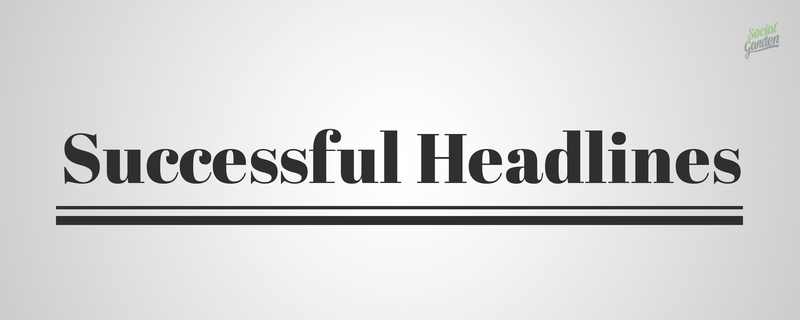BLOG
The Latest and the Greatest Advice on Successful Headline Creation
How often have you read a headline, deduced the content and moved on? Sadly, that’s something you have in common with about 80% of people who read through articles. Writers put a lot of thought and time into writing articles, but it’s the headline that should be able to hook the readers in. In fact, without a good headline, the contents you’re promoting may be left neglected and ignored, lost in a sea of Google results.
These days, you’ll find that there are a lot of trends when it comes to headline creation. These trends evolve and change based on how the readers respond. It’s important to keep up with these trends, lest you get left behind in yesterday’s passé headline trends. One day, long exaggerated headlines are in, and the next, they’re clichéd and overused. You never know when the tide will turn and all those catchy headlines you came up with become boring.
There are several types of headlines. You’ve probably seen the traditional high-level headline types, whether online or offline. However, as with the theme of changing trends in headlines, there has been a new addition into the field of headline creation that may be more eye-catching.
- Normal headlines are those that are typical in many printed magazines and in newspapers. They’re straightforward. Examples are “Eggs Benedict Recipe” and “A Recipe for Eggs Benedict.”
- Question headlines are also standard in many traditional prints, and even online. The question makes the viewer think of how he and she would do something. He or she would then be curious if the article has something new to offer. Examples are “What Are the Most Effective Household Cleaners?” or “What’s the Best Japanese Restaurant in Sydney?”
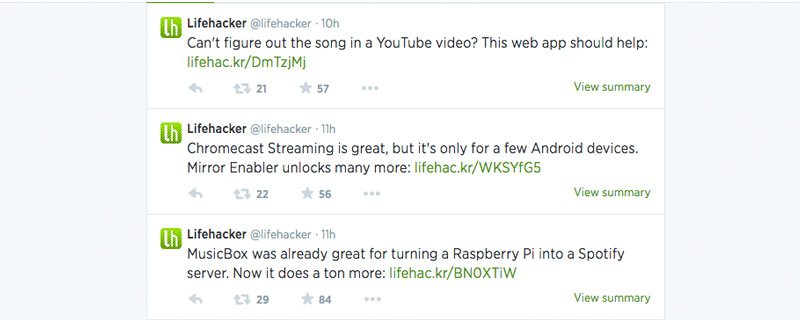
Lifehacker‘s how-to headlines on Twitter.
- How-to headlines make use of the problem-solution approach. It presents the reader with a problem that the article can solve through instructions or detailed explanations. Examples are “How to Get Rid of Pimples” or “How to Create a Pinterest Account.”
- Number headlines are list-style headlines. They’re very easy to read, which is why they have become so popular. The number gives you an idea of how many items you need to read through. Examples include “10 Items Every Man Should Have in His Closet” or “32 Movies with Hidden Symbols.”
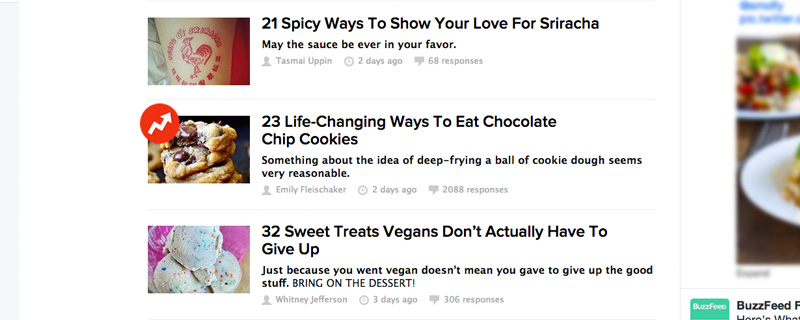
Buzzfeed‘s number headlines.
- Reader-addressing headlines directly address the reader to tell them of something that they need. They usually start with the word “why” such as “Why You Need More Baking Soda in Your Kitchen.” Another example is “Simple Tools You Need to Have in the Garden.”
- Intrigue headlines are relatively new, and they seek to intrigue readers in order to make them click on a link and read their content. These headlines seek to pique your interest with shock-value language and direct statements. They can question, humor or even offend readers enough in order to make readers so unbearably curious. Sites like viralnova.com and viralquake.com are just some sites that use these types of headlines:
— These Houses May Seem Perfectly Normal… But Wait Until You Find Their Amazing Secret!
— You’ve Probably Seen the Human Barbie… But Nothing Can Prepare You For this Picture!
— 8 Things You’d Never Believe About the Game of Thrones Cast!
— This Woman Thought She Could Get Away with Cheating… Watch as Her Husband Proves Her Wrong!
— This Heartbreaking Photo Hides a Sinister Secret… Can You Find Out What it Is?
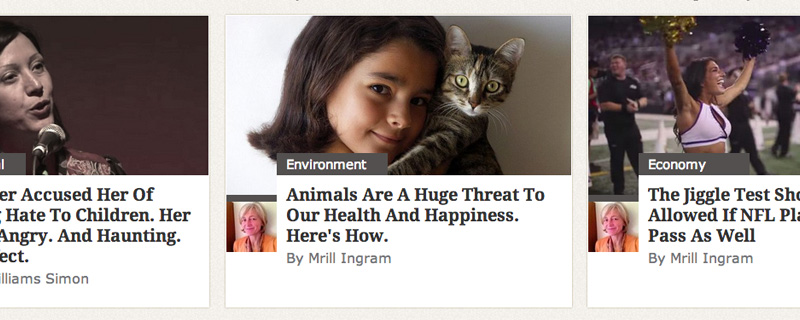
Intrigue headlines on Upworthy.
Creating Your Headlines
Do you think your site would benefit more from intrigue headlines? Or do you think your audience would respond better to how-to headlines? In order to create the headlines that your audience would click through and read, keep these guidelines in mind:
- Use your own words. Of course, you’re aiming for unique headlines, but what really matters in the way you use your words in order to express yourself when writing the headlines. Try different combinations of different words. Consult a thesaurus. Write out tons of headline ideas and ask your friends for their opinions. Is your brand image the type that would say the word “delightful” as opposed to “awesome” or “insane?” Does the article call for list-type or how-to type content?
- Be a leader in your niche. Intrigue headlines are great, but your audience may not respond well to it, particularly if you’re in the more professional field. As with the language you use, you should also find out what your audience thinks is interesting. If you have long-form content, you need to think of ways to make your audience interested. If your content is short, you’d need to come up with a headline that doesn’t reveal too much of what’s in the content.

CERN‘s own blog on their research.
- Test out your headlines. A/B testing allows you to check if one headline would perform better than all the others. Oftentimes, you’d have to come up with at least 10 headlines to choose from so that you can use software to determine which of them performed the best out of all of them. In the case of your brand, you can choose numerous combinations, headline types and headline lengths in order to find out which one is the most effective at generating traffic to your site.
- Imitate the pros. Find out what other people in the same industry are doing with their headlines. Check if they’re using product names, list style content, direct headlines or even intrigue headlines to market their content. See if the headlines you thought would be effective actually generate a lot of engagement when used by other brands. Use the same techniques and you just might beat them at their own game.
- Keep SEO in mind. Only the first 70 characters of your headline will be displayed when they show up on Google SERPs. With that said, it’s better to keep your headline short. In addition, it would also be easier for you to promote your content via Twitter if your headline can fit into a tweet with an additional call to action phrase.
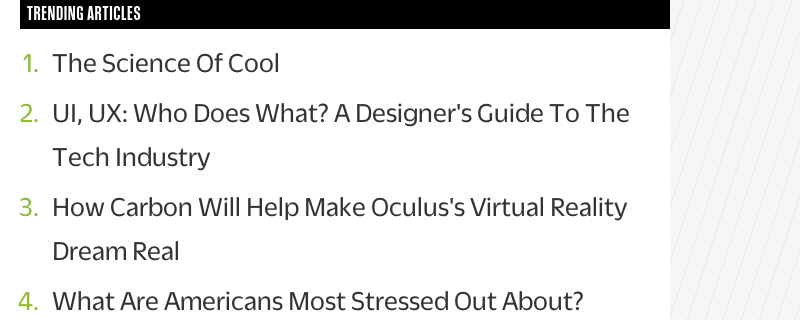
Trending articles on Co.Design
